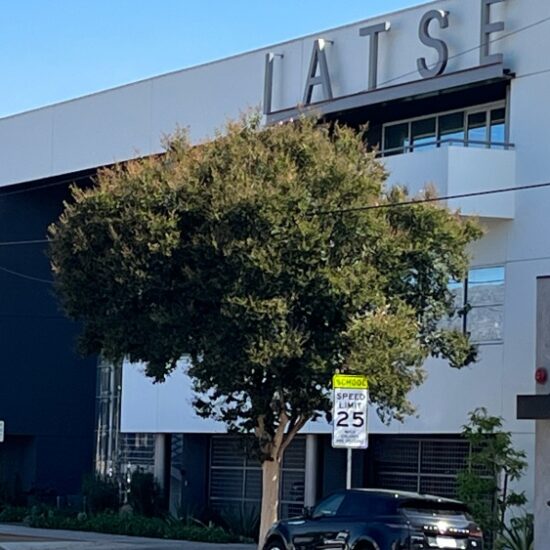
Rust has become the movie, worthy of spawning its own movie. That statement is not intended to make light of all that has transpired. In fact, this tragedy would do well to usher in much needed change. A senseless death should be catalyst enough to protect future artists from such wretched ends, but this is not the first time that a cast/crew member has been fatally injured on set.
Artists Beware
When it was announced on Thursday January 19, 2023, that producer/actor Alec Baldwin and armorer Hannah Gutierrez-Reed would be charged with involuntary manslaughter in the shooting death of cinematographer Halyna Hutchins, research was necessary to gain much needed understanding and perspective. After sifting through countless articles, scrutinizing police interrogation videos, and reviewing guild laws and union safety guidelines, there is one unexpected and startling conclusion: artist beware.
Doubt and Debate
The cast and crew on any film set are never far from an actor who may be expected to pick up a prop, portray a killer, point that prop (in this case a gun) at another human being and pull the trigger. Never should such thoughts enter into the mind of an actor; “Is this prop safe? If I do my job here, is someone going to get hurt?”
The debate rages on. Is it the actor’s responsibility to check props for safety, or is it the people who are hired to gather, maintain, distribute, inventory and train others in the use of these props; are they ultimately responsible? When it comes to firearms, is another layer of security needed beyond what an armorer is required to do? Is it the responsibility of the producers to ensure safety measures are executed by people who are knowledgeable and experienced enough to do so? Is the promise of on set safety under the watchful eye of the first assistant director? There is doubt and debate. There should be zero doubt, there should be zero room for debate.

Alec Baldwin-Courtesy New York Times
Some industries are held to a higher standard because they involve public safety. The airline industry is a perfect example, healthcare is another. These industries delve deep into things like process, procedure and transparency. They know about the bureaucratic and laborious efforts required to implement relentlessly stringent protocols for safety.
Why do these things risk failure? An absence of ownership, a lack of dogged persistence, and the ever-present desire to cut costs.
An Industry in Need of Scrutiny
Any film or television set can post roles and responsibilities, can pay homage to a set of safety protocols published by their union or make claims that the rules are well known by all. These are just words. It’s not about the knowing, it’s about the doing. It’s about the process of adherence, and the deliberate documentation of action steps taken to certify compliance. It’s about an undeniable standard that is the same for every project. In an industry where no two sets are alike, or no two actors carry the same level of knowledge, experience, training and personal deportment, and no two projects have the same schedule or budget, safety cannot ebb and flow with these differences.
The entertainment industry is rife with inadequacy. If you want to be an actor you can go to film school, but you don’t have to. There are many actors who have no formal training. If you are in the trades however, an electrician for example, your path to employment is governed first by the statutory body that dictates the minimum of educational and training requirements in order to be licensed. By comparison, an armorer has no such licensing agency. The state attorney general’s office requires nothing more than a fingerprint-based background check to ensure the applicant is not a felon. And once this is done, the armorer is issued an entertainment firearms permit (EFP). An EFP does not ensure proof of competency or a minimum of formal education or training.
To further complicate matters, the International Alliance of Theatrical State Employees (IATSE), the union behind the entertainment industry, is made up of more than 360 locals, organized by geographic region and craft jurisdictions, which are independent, non-profit, autonomous entities. If I search a local IATSE site (local 52, Astoria, NY, for example) for the basic job description of an armorer, it lists the following requirements: “No particular educational background is required. Following directions and being reliable are essential.”
Many armorers have military and/or law-enforcement backgrounds and have found a niche in the entertainment industry that makes effective use of the depth and breath of their knowledge, experience and specialized skill set. This, however, is not an enforced standard.
How Could This Be?
For a job whose task it is to ensure on set safety regarding all things weaponry, there is no basic formal educational standard. And even if a particular local in one state requires more education than another, it is not universal. Skill for an armorer is typically obtained through internships and on the job training. If you compare two armorers from different backgrounds, different locals, different states and whose “educational” path is wildly different, how is the bastion of safety being served? When life hangs in the balance, obedience to a higher standard must be the call to action.
The Screen Actors Guild (SAG) publishes guidelines and recommendations for safety that are in no way intended to be considered binding law or industry regulations. They state that as an individual cast or crew member, you have the right to protect yourself. Everyone has the right to speak up, the right to demand a stunt double, the right to stop production if they feel unsafe and to stand in solidarity with other cast and crew members, should any of them feel unsafe. However, what that does not mean, is that an actor is responsible for on set weapons safety.
The Producers
There has been much speculation regarding the responsibility of producers on a film project. Definitions range. Some tout that the role of producer oversees and facilitates all aspects of production, while other definitions are unmistakably superficial. In these instances, producers are defined as financial backers and creative contributors. In some instances, the title of producer is nothing more than a ceremonial label bestowed upon an actor to entice their participation. So while these titles, and the people who bear them, would inevitably find themselves near the top of any film production’s hierarchy chart, not all of them are expected, or even able, to exert any influence over the day-to-day operations.
On Rust, there are four types of producers listed in IMDB;
- Producers; Alec Baldwin, Matt DelPiano, Nathan Klingher, Anjul Nigam, Ryan Donnell Smth, Ryan Winterstern,
- Executive Producers being Tyler Gould, Matthew Helderman, Matthew Hutchins, Luke Taylor,
- Co-Producer: Kc Brandenstein,
- Line Producer: Gabrielle Pickle.
As Alec Baldwin is the most recognizable of all production staff, his celebrity seems to have, in the prejudicial eyes of some, burdened him with omnipotent responsibility for everything. In an interview between New Mexico First Judicial District Attorney Mary Carmack-Altwies, Special Prosecutor Andrea Reeb and Judge Jeanine Pirro in a Fox News Flash published on January 19, 2023, Reeb has been quoted as saying; “We believe Baldwin, as a producer, knows everything that goes on, on the set, and so, yeah, there was a lot of problems, there were a couple of accidental discharges, there were a lot of safety concerns that were brought to the attention of management and he did nothing about it. So this was a loose and reckless scene where safety was compromised just to save money.”
Investigation thus far has revealed that the only producer credit found associated with Alec Baldwin is one of creative producer. So jurisprudence would demand, why is Alec Baldwin the only producer under fire here?
Points of Failure
Whether the outcome of this tragedy points to a producer, an actor or a crew member, it is bigger then that. It is a system failure. A system is a set of processes designed to achieve a certain result. As long as processes and procedures are working properly, the system runs smoothly. When processes are outdated, flawed, and lack adherence or ownership, it leads to system breakdown. Production sets are complex systems. The only way a complex system can experience catastrophic collapse, as was the case on Rust, is through multiple, simultaneous points of failure.
The Anatomy of a Scapegoat
All system failures require a scapegoat. This one seems to be Alex Baldwin.
Seasoned observer of life and all its wonders. Doer of good deeds. Fangirl lover of movies, stories, TV and music. Freelance writer. Business Analyst and Project Management professional. LSSGB Certified, ITIL Foundation. Personal motto: Be Grateful - Listen Well - Show Kindness - Seek the Light & Never Stop Evolving. She/her.














